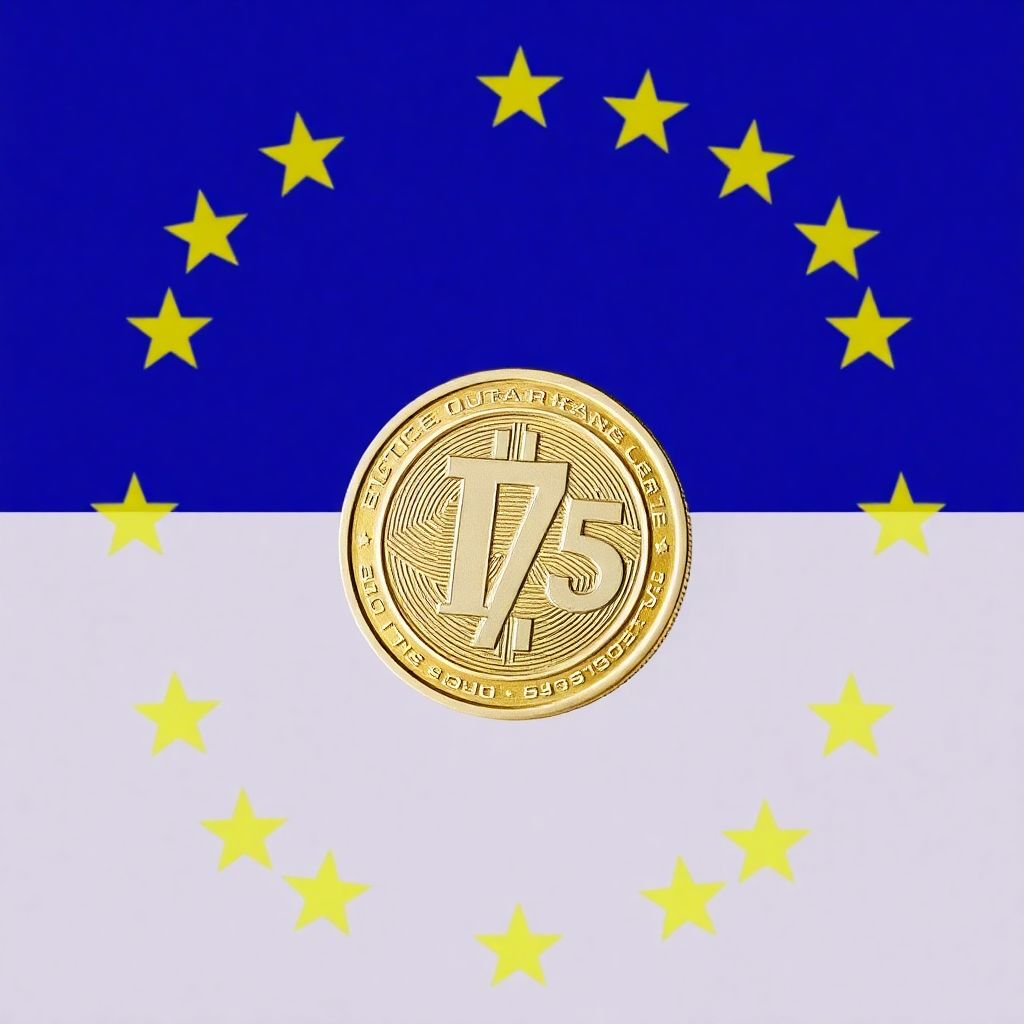The European Union has enacted its 19th sanctions package against Russia, intensifying efforts to curtail Moscow’s financial maneuvering amid the ongoing war in Ukraine. A key element of this latest round of restrictions is a direct strike against the country’s growing use of digital currencies. The EU has officially prohibited all transactions involving the A7A5 stablecoin — a ruble-pegged cryptocurrency supported by Russian state interests.
This digital asset, developed with backing from Russian institutions and issued by a Kyrgyz company, has been central to facilitating cross-border transactions that circumvent conventional banking systems. The EU has not only banned the token itself but also placed the issuing entity, its platform operator, and a Paraguay-based exchange involved in its circulation on its sanctions blacklist. These measures are part of an intensified crackdown on the use of crypto to evade financial restrictions.
According to European officials, A7A5 has enabled over $15 billion in covert transactions, providing Russia with a discreet mechanism to funnel funds in and out of the country. This financial route has supported Moscow’s ability to sustain its military operations while avoiding direct exposure to Western financial oversight. The sanctions aim to block this channel and tighten the noose on Russia’s economic lifelines.
The EU’s move comes on the heels of statements from Russian Finance Minister Anton Siluanov, who recently advocated for the legalization of cryptocurrencies in international trade. Siluanov has acknowledged the strategic value of digital assets in bypassing traditional financial frameworks and emphasized the need for robust regulatory oversight. However, the EU’s latest action directly challenges this pivot, casting doubt over the feasibility of Russia’s crypto-centric trade ambitions.
The prohibition of A7A5 marks a turning point in the EU’s approach to digital assets. This is the first time an entire blockchain-based stablecoin tied to a state actor has been subjected to a blanket ban within the Union. By targeting the infrastructure and key intermediaries that allow such assets to operate, the EU is signaling a broader commitment to shutting down digital pathways that enable sanctioned states to access global capital.
Furthermore, European regulators are tightening restrictions on domestic fintech and crypto service providers, explicitly barring them from offering tools or services that could assist Russia in building a parallel financial ecosystem. This includes trading platforms, payment processors, wallet providers, and even blockchain developers whose technologies could be repurposed for illicit state financing.
The crackdown also highlights the growing role of offshore platforms in enabling sanctioned nations to participate in global crypto markets. The Paraguay-based exchange sanctioned by the EU played a crucial role in converting crypto into fiat for Russian entities and helped mask the origin of funds. By targeting such intermediaries, the EU hopes to curtail the use of decentralized finance (DeFi) as a loophole in sanctions enforcement.
The move may have ripple effects across the broader stablecoin market. Analysts suggest that the EU’s actions could set a precedent for future regulation, particularly as governments become more aware of the geopolitical implications of crypto. Stablecoins, once heralded as a neutral vehicle for financial inclusion and efficiency, are increasingly being scrutinized for their role in state-level financial strategies.
In response to the ban, several EU-based crypto exchanges have already suspended A7A5-related transactions and delisted the token entirely. Legal experts warn that failure to comply with the new sanctions could result in severe penalties, including asset freezes and criminal prosecution. This environment of heightened regulatory risk is likely to cause further fragmentation in the global crypto trading landscape.
The implications for Russia are significant. With A7A5 removed from the European financial equation, Moscow may struggle to maintain the same level of liquidity and flexibility in its international crypto dealings. The loss of access to this digital channel could hinder efforts to finance imports, settle cross-border contracts, and move capital without oversight.
Looking ahead, Russia may attempt to deepen its cooperation with non-Western allies to develop alternative crypto frameworks. Countries like China, Iran, and Venezuela have also explored blockchain-based solutions to bypass international sanctions. However, building a secure and scalable alternative financial network takes time, and the EU’s immediate actions may stall Russia’s progress in the short term.
From a broader perspective, the EU’s sanctions reflect a growing recognition among Western policymakers that cryptocurrency is no longer just a technological curiosity or speculative asset. It has become a strategic tool — one that can either support or undermine global financial stability, depending on how it’s used and regulated.
Moreover, this development underscores the need for coordinated international efforts to create a regulatory framework for digital assets that balances innovation with geopolitical security. As more countries explore central bank digital currencies (CBDCs) and stablecoin projects, the line between decentralized finance and national interests continues to blur.
Ultimately, the EU’s targeting of the A7A5 stablecoin sends a strong message: digital currencies will not be exempt from the rules of international order. Whether used by individuals, corporations, or states, crypto assets must operate within the bounds of law and accountability — or face the consequences.

